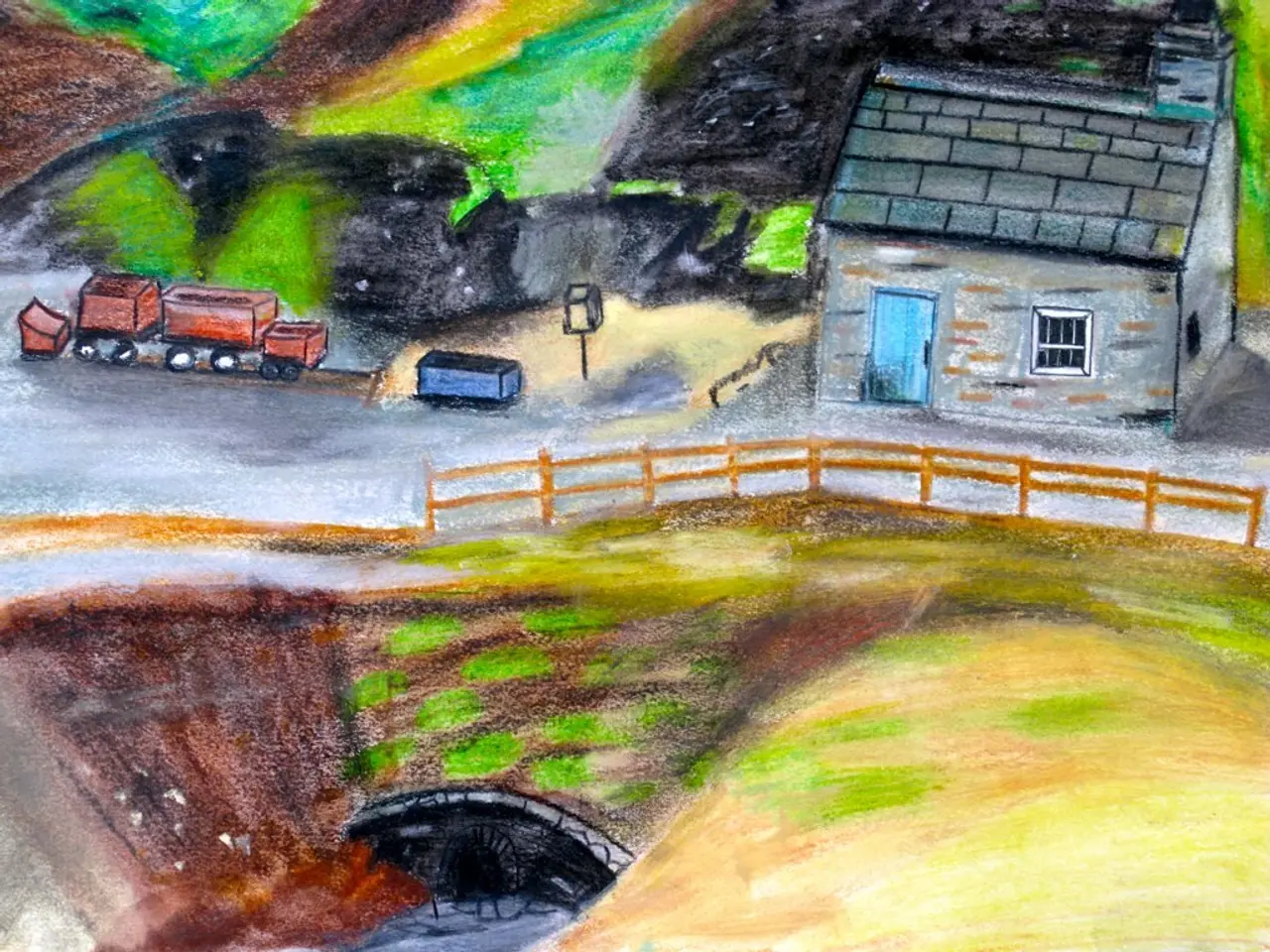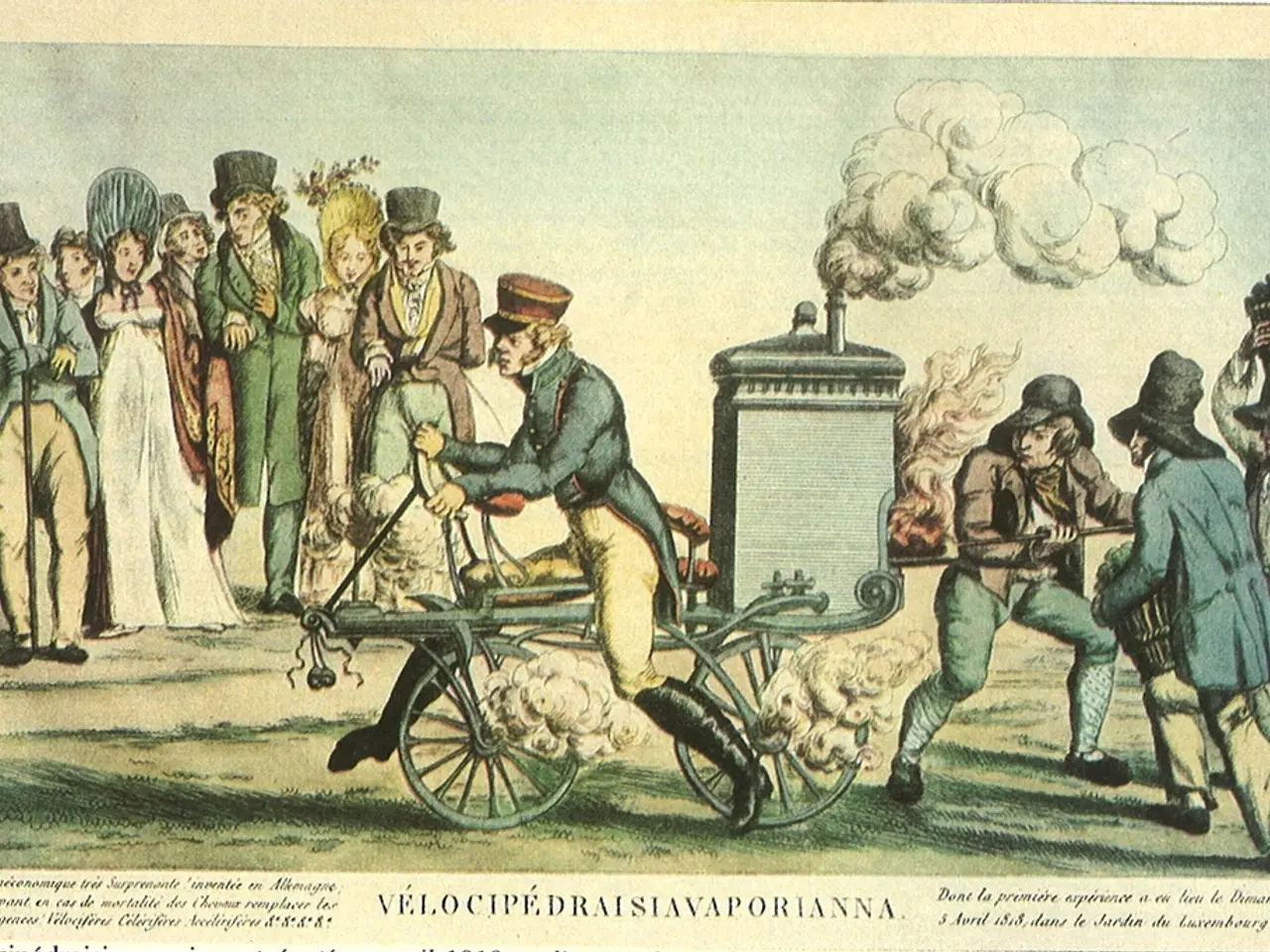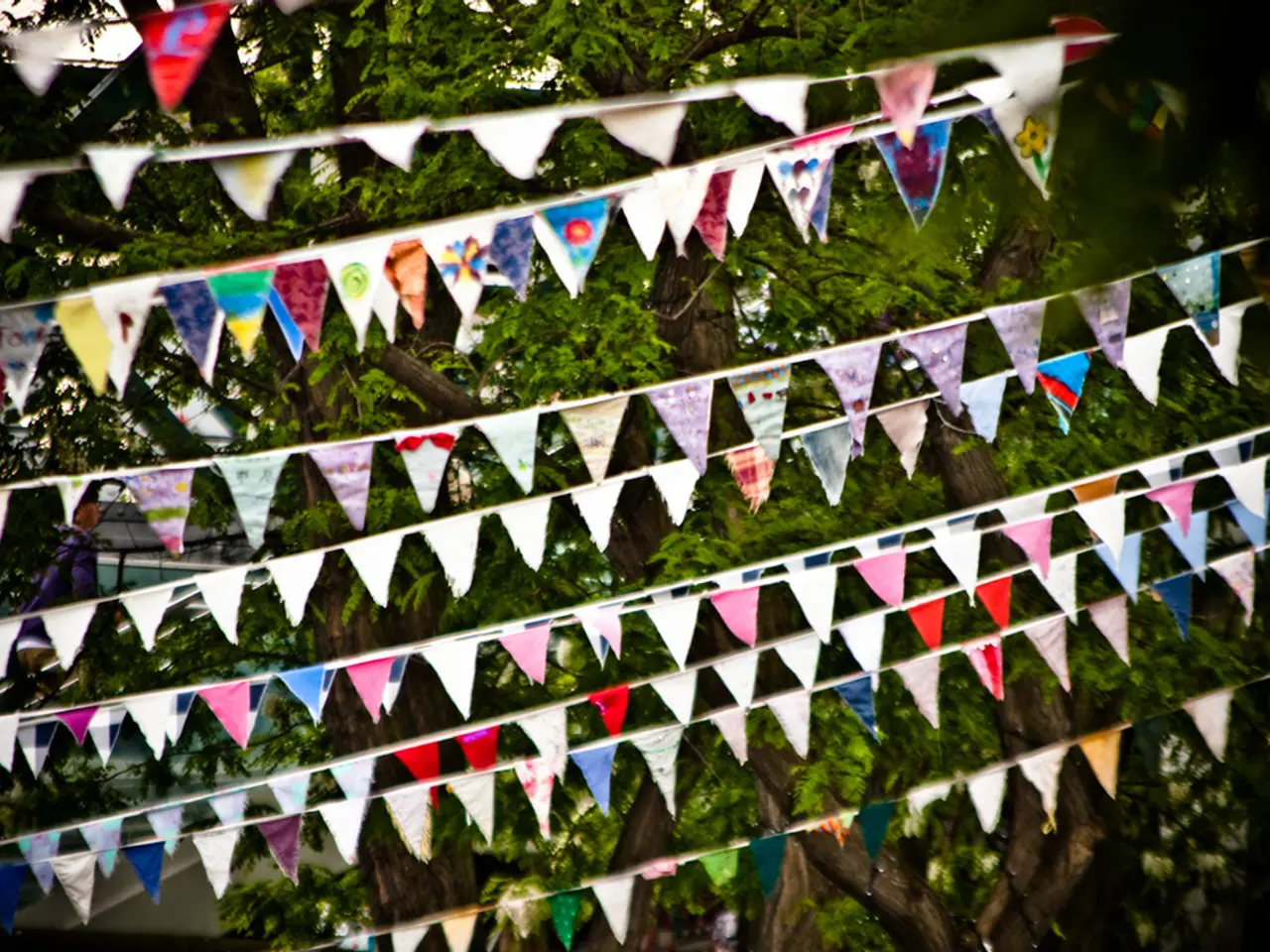Mastering the Art of Capturing Canvas Paintings: A Detailed Walkthrough
In the world of art, capturing the true essence of a canvas painting through photography is a skill that requires careful consideration. Here are some essential techniques to optimize lighting and camera setup for high-quality images.
**Lighting Optimization**
1. **Natural Light**: Position the canvas near a north-facing window to benefit from consistent, indirect light that helps preserve colours and textures. Avoid direct sunlight, which creates harsh shadows and highlights.
2. **Artificial Lighting**: Balance lighting from both sides using basic clamp lights with diffusers. Soft, even light can be achieved with softbox lights, LED lights, or ring lights. Ensure all bulbs have the same colour temperature, ideally 5000K daylight bulbs.
3. **Avoid Overhead Lights and Flash**: These can create hotspots and glare, affecting the overall quality of the image.
**Camera Setup**
1. **Stabilization**: Use a tripod to ensure the camera is stabilized, reducing camera shake and allowing for sharper images.
2. **Camera Positioning**: Place the camera directly in front of the artwork in a square position. This helps maintain symmetry and avoids distortions.
3. **Composition**: Experiment with the camera's position relative to the artwork to enhance depth and perspective. For example, slightly tilting the camera can create interesting effects.
**Additional Tips**
- **Consistency**: Ensure lighting is consistent for all photographs to maintain a unified look in your portfolio. - **Color Reference**: Use a color reference card in the shot to ensure accurate colour reproduction during post-processing. - **Timing**: Shoot mid-morning or late afternoon when the natural light is softer. Turn off all indoor lights to avoid mixed lighting sources.
By following these guidelines, you can achieve high-quality images of canvas paintings that capture their true colours and textures. Proper composition involves framing the artwork well, positioning the camera at eye level, ensuring the artwork is well-lit, and leaving a little space around the painting. Cluttered spaces should be avoided as they can take attention away from the painting.
For general photography, a standard lens (50mm) is great, while a macro lens captures fine details, and a wide-angle lens shows larger pieces. The rule of thirds can create a more dynamic composition by dividing the frame into three equal parts and placing the artwork along the lines or at their intersections.
DSLR cameras offer higher image quality, better control over settings, and interchangeable lenses, while smartphones are portable, user-friendly, and suitable for quick shots. Faster shutter speeds can freeze motion and prevent camera shake, while slower shutter speeds can capture more light and create motion blur. A tripod should be used for slower shutter speeds to prevent camera shake.
Setting up lights at a 45-degree angle to the canvas and using two light sources can minimize shadows and improve the quality of the photo. Experimenting with different angles, such as shots from above or below, adds depth to photos of canvas paintings.
In the realm of art history, Jane Stuart, born in 1812, was an American painter known for her miniature paintings and portraits, particularly of George Washington. She was the youngest child of renowned painter Gilbert Stuart. The power of square paintings lies in their precision and allure, captivating art enthusiasts in galleries worldwide.
To enhance your photography lifestyle, consider incorporating the techniques for optimizing lighting and camera setup. For lighting, natural light from a north-facing window ensures consistent color preservation, while artificial lighting with softbox lights or ring lights can provide soft, even light. Avoid overhead lights and flash as they can create hotspots (Fashion-and-Beauty). For camera setup, use a tripod to ensure stability, position your camera in a square position, and consider trying different camera angles (entertainment). To further develop your skills, immerse yourself in education-and-self-development resources that cover subjects like composition rules (Rule of thirds), lens selection (wide-angle, standard, macro), and camera types (DSLR, smartphone). To complement your photography collection, consider reads on art history and its influential figures like Jane Stuart (books). Upgrade your home-and-garden décor by showcasing your high-quality art photographs (food-and-drink).




